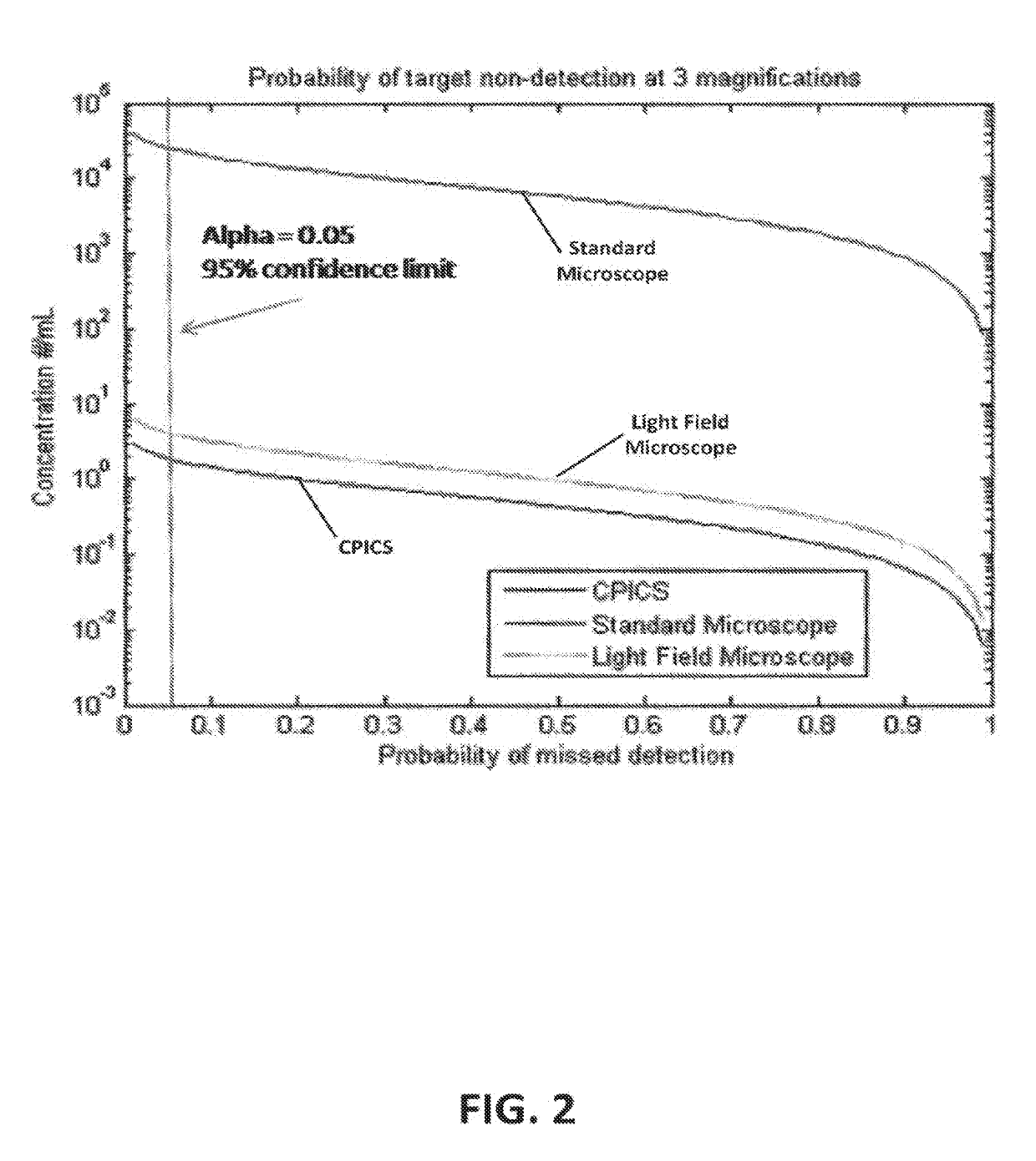System for rapid assessment of water quality and harmful algal bloom toxins
a technology for rapid assessment and water quality, applied in the field of optical imaging and spectroscopy, can solve the problems of paralytic shellfish poisoning (psp) which can be potentially fatal, toxic blooms are often devastating to the ecosystem and a large variety of marine organisms, and habs can have a direct, potentially fatal, effect on humans
- Summary
- Abstract
- Description
- Claims
- Application Information
AI Technical Summary
Benefits of technology
Problems solved by technology
Method used
Image
Examples
example 1
[0158]This example further describes plankton species and Raman peaks associated with specific compounds present within the algal cells used for the detection and analysis of HABs in the environment.
[0159]The strains listed in Table 1 were obtained from the National Center for Marine Algae and Microbiota (NCMA), subcultured in L1 media and analyzed using a bulk Raman probe at 532 nm. The processed (background corrected) spectra of 15 repeated analyses (FIG. 8) indicated a variety of peaks common to all species and some that are specific to certain groups (e.g., single peak at 1120 cm−1 versus dual peaks at 1165 cm−1 and 1187 cm−1). Most of the peaks can be attributed to pigments (Chlorophyll a, b, c [915, 1495, 1165, 1187 cm−1], β-Carotene [1008, 1157, 1265, 1525 cm−1]) and fatty acids and lipids. Peaks associated with saxitoxin (e.g., 533, 800, 950, 1185, 1238, 1324, 1491, 1548, 1611 cm−1) are present in some species and not in others as expected. PCA on replicate spectra was perfo...
example 2
[0163]This example provides Table 2 showing a representative example of harmful algal bloom targets of interest which may be detected by the present invention and their associated toxin.
GroupClassSpeciesSpecies of HABDinoflagellatesNoctiluca scintillans, Akashiwo sanguinea,that are non-Gonyaulaxtoxic but causepolygramma, Scrippsiella trochoideaanoxicCyanobacteriaTrichodesmium erythraeum, AureococcusconditionsanophagefferensSpecies that areDinoflagellatesCochlodinium polykrikoides, Karenia mikimotoi,non-toxic toKarenia brevisulcatahumans butHaptophytesPrymnesium polylepis, Prymnesium parvianharmful toRaphidophytesHeterosigma akashiwo, Chattonella antiqua,fishChattonella marinaSpecies thatDinoflagellatesAlexandrium fundyense, Alexandrium mimitum,produce andGymnodinium catencatum, Pyrodiniumrelease verybahamense, Alexandrium catenella, Alexandriumpotent toxinsTamarense, Azadinium spinosum, Gambierdiscuspolynesiensis, Dinophysis acuta, Dinophysisacuminata, Dinophysis fortii, Dinophysisn...
example 3
[0164]In other embodiments, the present invention may be used to image, observe, classify, and / or otherwise detect microplastics in the surrounding environment as targets of interest. As plastic debris is accumulating in the aquatic environment, it is becoming a highly important topic for both short-term and long-term repercussions. Currently, no autonomous vehicles or sampling devices exist for quantifying and characterizing the millimeter size and smaller marine debris. Furthermore, no submersible Raman spectroscopy-based sensors or light microscopes currently exist for such applications.
[0165]An estimated 299 million metric tons of plastic were used globally in 2013. A great deal of debris from this usage eventually makes its way to the ocean. The effects of Plastic Marine Debris (PMD) are a potential threat to marine biota, since even the earliest scientific reports pointed to a multitude of potential interactions with microbes, fish, and zooplankton (Carpenter et al (1972) Poly...
PUM
| Property | Measurement | Unit |
|---|---|---|
| wavelengths | aaaaa | aaaaa |
| wavelengths | aaaaa | aaaaa |
| wavelengths | aaaaa | aaaaa |
Abstract
Description
Claims
Application Information
 Login to View More
Login to View More - R&D
- Intellectual Property
- Life Sciences
- Materials
- Tech Scout
- Unparalleled Data Quality
- Higher Quality Content
- 60% Fewer Hallucinations
Browse by: Latest US Patents, China's latest patents, Technical Efficacy Thesaurus, Application Domain, Technology Topic, Popular Technical Reports.
© 2025 PatSnap. All rights reserved.Legal|Privacy policy|Modern Slavery Act Transparency Statement|Sitemap|About US| Contact US: help@patsnap.com



